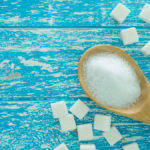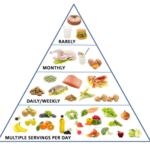By David Blyweiss, M.D., Advanced Natural Wellness
August 19, 2013
- What does lower sodium REALLY mean?
- 5 labeling deceptions that rob your health
- This sneaky trick disguises sugar content
Today I felt like the Grinch when I had to tell a patient her “healthy” eating habits were anything but healthy. And it wasn’t entirely her fault, either.
You see, the way they package food these days can really trick you into making choices that aren’t good for you.
Grocery store aisles are filled with flashy labels that claim they are lower sodium, fat-free or low in fat. Others declare they are sugar free or have zero trans-fats. And health-conscious shoppers are loading their grocery carts full of these items.
But these claims can mislead you into thinking a product is good for you when it isn’t.
In the case of the woman I’m talking about, she has high blood pressure. This makes it important to restrict her sodium intake to less than 1500 mg daily. And it’s one of the areas she is having the most problem with.
She keeps seeing labels that say products are “reduced” sodium and tossing them into her cart.
But what she doesn’t realize is that these claims don’t mean the products actually have low amounts of sodium. It just means they have about 25% less sodium than other foods of their type.
For example, she’s been buying lower sodium roasted chicken breast for sandwiches and to add to salads. The brand she’s using claims to contain “42% lower sodium.” But just two ounces – or one serving – of it contains 350 mg. of sodium.
Open your arteries, improve blood flow for a new health miracle...
Did you know your circulatory system has over 60,000 miles of arteries, veins and other blood vessels, if stretched end to end?
But as you age, your blood vessels undergo changes, which may cause them to stiffen, thicken and get clogged.
GOOD NEWS! Doctors have now identified a “Miracle Molecule” inside your arteries that helps OPEN your arteries and IMPROVE blood flow.
It’s what Dr. Valentin Fuster calls it, "One of the most important discoveries in the history of cardiovascular medicine."To you, that means...
- Healthy blood pressure
- Sharper mind and memory
- Skyrocketing energy and muscular strength
- Increased pleasure and passion in the bedroom
- Improved circulation to every cell and organ in your body
Go here to discover a new natural way to significantly boost the levels of this miracle molecule in YOUR body NOW!
Well, she’s using around four to six ounces to make a sandwich. That’s between 750-1050 mg of sodium in one serving. Then she’s using just about the same amount in her salads. These two meals alone max out, or exceed, her sodium limit for the day at 1500 to 2100 mg. of sodium.
Unfortunately, she’s also eating lower sodium soups and snacks. All told, she’s probably consuming 3000 to 4000 mg of it each day while eating reduced sodium foods.
This isn’t the only trick food manufacturer’s are using to make their products sound healthier.
Here are five more common labeling deceptions that may be robbing you of your health…
If it was up to me, we would all be eating fresh foods. But we’re living in a society where store shelves are loaded with boxed and packaged foods that are very convenient. This is especially true when you’re running late or need a quick meal or snack.
When buying from the store shelves, here are some key words to watch out for…
Low fat or fat free. A lot of people tend to purchase foods that are labeled reduced fat or fat free. The idea is that sticking with these types of foods will help keep your waistline trim and cholesterol levels in check.
Well here’s a big surprise. If you’re eating low-fat or no-fat foods from a package, you’re probably consuming more ingredients that pack on the pounds than you would think.
That’s because fat free pretty much means “taste free.”
To make up for the horrible taste of packaged foods stripped of fat, manufacturers throw in lots of extra sugar, flour, salt and thickeners that really boost the calorie content. And a lot of the added ingredients also hijack your taste buds to make you eat much more than you normally would.
Are You Suffering From...
- Love handles and a pot belly
- Romance that isn't what it used to
- Forgetfulness and inattention
- Low (or no) strength and endurance
- A sex drive that's shifted into neutral...or worse
If so...you may have Mature Male Burnout. Click here to discover more about this unique condition and what you can do about it.
Sugar free sounds great in theory. But how can they make all that food taste so sweet if they aren’t putting sugar in it?
Well, they use artificial sweeteners instead.
Now I’ve talked about the dangers of artificial sweeteners before. Studies suggest these no-calorie sweeteners contribute to weight gain. And they do it in much the same way sugar does. Plus they can also cause headaches, abdominal pain, nausea, heart problems, liver and kidney impairments and diarrhea.
I place artificial sweetener in the same category as high fructose corn syrup and sugar. Ultimately all of these should be avoided whenever possible.
Zero trans fats. This one is real tricky because, thanks to a loophole in the law, manufacturers can put up to 0.5 grams trans fats in a produce and claim it has none. So if you happen to eat three servings of a product that claims zero trans fats … and it actually contains .49 grams … you’ve already eaten almost one and a half gram of trans fats.
To avoid trans fats completely, check the ingredients list for the words “hydrogenated” or “partially hydrogenated.” If you spot either of these words, the product contains at least some trans fat. And if these terms are near the top of the ingredient list, drop the box and run the other way!
High in fiber. Everybody knows adequate fiber intake helps keep their bowels functioning smoothly. It also helps keep you feeling full longer, and is good for maintaining healthy blood sugar and cholesterol levels.
But a lot of packaged foods boasting high fiber contents may be using forms of fiber that doesn’t do any of these things. These fibers are being called “stealth fibers,” since they are added to foods that wouldn’t normally contain them.
Here’s the deal. Added fiber from inulin, polydextrose and maltodextrin may boost the amount of fiber that can be listed on nutritional labels. But don’t be fooled.
These isolated fibers don’t behave the same way as the natural fiber found in whole grains, legumes, fruits and vegetables. That’s because they don’t contain all of the minerals, phytonutrients and antioxidants you’ll find in naturally fibrous foods. So you won’t get the same health benefits from them.
Made with whole grain. Earlier this year Harvard researchers pointed out a real problem with foods stamped as whole grain. And while it might surprise you, it just confirmed what I’ve been pretty sure of all along:
Products stamped with the “Whole Grain Stamp” are higher in both sugar and calories than products without the “Stamp.”
There’s also a second concern. From what I can see, a lot of “whole grain” products are made with whole grain corn flour. And as it turns out, about 86% of the corn produced in American is genetically altered. I suggest staying away from any products that include whole grain corn flour unless it’s listed as organic.
Here are a couple more tips to help you make the healthiest choices.
Instead of counting on the flashy labels to make your food choices, start reading the nutrition panels on everything you buy. The most important part of label reading is checking out the serving size, because they are often surprising.
Many packaged foods that look like they should be a single serving often contain two or three servings.
This means everything on the nutrition panel has to be multiplied by the number of servings, which can really make a big difference in your choices. For instance a tiny, eight ounce can of tomato sauce contains 3.5 servings. At 390 mg. of sodium per serving, one tiny can contains 1,365 mg. of sodium.
It’s also a good idea to read the ingredient list. If you find the word hydrogenated in the list, put the item back on the shelf. Do the same if you see the words corn syrup.
And here’s a really sneaky trick to watch out for.
No food manufacturer wants sugar to be the first thing on their list. So they use several different types of sugar and spread them out lower in the list. Look for sucrose, brown sugar, dextrose and corn syrup sprinkled throughout the list.
Also watch out for the four most commonly used artificial sugar substitutes –aspartame, aceslulfame, sucralose and saccharin.
On a final note, try eating fresh, unprocessed foods as often as possible. Most fresh fruits and vegetables are low in fat, filled with fiber and naturally sweet. And when you buy organic, you don’t have to worry about any additives or genetic modification.
Resources:
Bonnema AL, Kolberg LW, Thomas W, Slavin JL. Gastrointestinal tolerance of chicory inulin products. J Am Diet Assoc. 2010 Jun;110(6):865-8.
Foods identified as ‘whole grain’ not always healthy. Harvard School of Public Health. Jan 2013.






